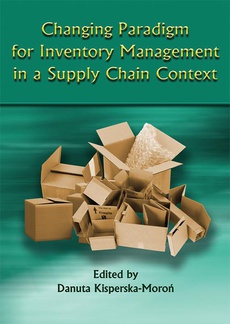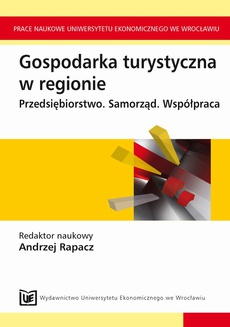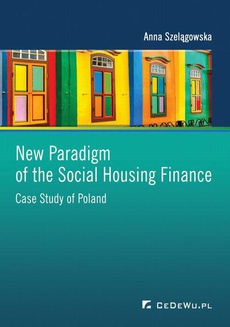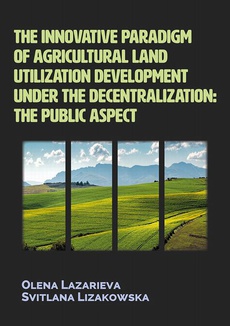POLECAMY

-17%
Changing Paradigm for Inventory Management in a Supply Chain Context
Redakcja:
Format:
pdf, ibuk
The aim of the study was to identify the main issues and key areas typical for decisions taken in supply chains, demonstrating a new approach to inventory management as a process of value added creation. The problems discussed by the authors have been identified as several key areas requiring a more profound analysis in order to understand the modern approach to inventory management in supply chains and distribution networks. The range of analysed problems is really wide: from the inventory strategy of postponement and speculation in modern supply chains, through forecasting and planning as the direct tools of realization of the strategic decision concerning the location of Material Decoupling Point, to the issues of trade-offs between lean and agile operations in supply chains, supporting different patterns of inventory efficiency. Finally, a large part of the study has been dealing with new modern concepts of supply chain management, resulting from the growing complexity of business processes and their increased discontinuity.
| Rok wydania | 2011 |
|---|---|
| Liczba stron | 195 |
| Kategoria | Inne |
| Wydawca | Wydawnictwo Uniwersytetu Ekonomicznego w Katowicach |
| ISBN-13 | 978-83-7246-741-6 |
| Numer wydania | 1 |
| Język publikacji | angielski |
| Informacja o sprzedawcy | ePWN sp. z o.o. |
Ciekawe propozycje
Spis treści
| INTRODUCTION | 9 |
| Chapter I. INVENTORY STRATEGY OF POSTPONEMENT AND SPECULATION IN MODERN SUPPLY CHAINS | 11 |
| 1. The concept and types of postponement and speculation strategies in supply chains | 11 |
| 2. The impact of inventory strategy of postponement and speculation on supply chain performance in the retail sector | 17 |
| 2.1. The concept of logistics postponement in a traditional retail supply chain | 17 |
| 2.2. The application of inventory strategy of logistics postponement in the retail supply chain of Wal-Mart | 19 |
| 2.3. The results of application of logistics postponement strategy and its future implications in retail supply chains | 23 |
| 3. Selected aspects of research into determinants of postponement and speculation strategies – empirical results obtained from companies operating in Polish supply chains | 26 |
| 3.1. Determinants of postponement and speculation strategies within supply chains | 26 |
| 3.2. The location of central inventory as a classification criterion of companies | 28 |
| 3.3. The analysis of product-market determinants of postponement and speculation strategies in Polish manufacturing companies | 32 |
| 3.4. The results of the empirical studies on determinants of postponement and speculation strategies in companies operating in Polish supply chains | 39 |
| 4. Practical implementation of inventory strategy of postponement and speculation in contemporary supply chains – some operational issues | 41 |
| Chapter II. DEMAND PLANNING PROCESS | 45 |
| 1. Basic definitions concerning demand planning process | 45 |
| 2. Demand management | 47 |
| 3. Demand planning process | 51 |
| 4. Demand forecasting requirements in a company | 57 |
| 5. Demand planning in a service company | 59 |
| 5.1. Demand planning of existing products | 63 |
| 5.2. Demand planning of new products | 69 |
| 5.3. Replanning process | 72 |
| 6. Conclusions | 77 |
| Chapter III. LEAN LOGISTICS SERVICE PROVIDERS: OPTION OR UTOPIA? EXPERIENCES | |
| FROM THE NETHERLANDS | 78 |
| 1. Introduction | 78 |
| 2. Logistics service providers | 79 |
| 2.1. The role of logistics service providers | 79 |
| 2.2. The relationships between shippers and logistics service providers | 80 |
| 2.3. The primary processes of logistics service providers | 82 |
| 3. Lean Management | 85 |
| 3.1. Principles | 86 |
| 3.2. Lean Bundles | 87 |
| 4. Lean Logistics Service providers | 89 |
| 4.1. Differences between LSPs and manufacturing | 89 |
| 4.2. LSPs create value | 91 |
| 4.3. Waste in LSP processes | 92 |
| 4.4. LSPs can improve continuously | 95 |
| 5. Discussion | 95 |
| Chapter IV. SUPPLY CHAIN AS A VIRTUAL ORGANIZATION: DREAM OR REALITY? | 98 |
| 1. Relationships in a supply chain | 98 |
| 2. Most important aspects of virtual organization | 103 |
| 2.1. Virtual organization: what does it really mean? | 103 |
| 2.2. Discontinuity as the main feature of virtual supply chains | 103 |
| 3. Are average companies prepared to function within the frameworks of virtual supply chains? | 105 |
| 3.1. Approach and methodology | 105 |
| 3.2. Interconnectivity of the surveyed companies | 106 |
| 3.3. Potential of logistics service providers | 109 |
| 3.4. Logistics potential of firms for their operations in virtual supply chains | 110 |
| 4. Virtual logistics as a model concept of resource support for virtual supply chains | 111 |
| 5. Behavioural aspects of virtual supply chains | 115 |
| 5.1. Application of structuration theory | 115 |
| 5.2. Human resources in logistics and supply chains | 118 |
| 5.3. Changes of manager competencies and employment patterns in constantly virtualizing supply chains | 119 |
| 5.3.1. Methodology | 119 |
| 5.3.2. Human resource aspects | 120 |
| 6. Conclusions | 124 |
| Chapter V. THE EVALUATION OF VIRTUAL ACTIVITIES IN A SUPPLY CHAIN | 127 |
| 1. Introduction | 127 |
| 2. Some improvement of Grubbström's MRP model | 128 |
| 3. The impact of virtual enterprises on changes of NPV | 132 |
| 4. Conclusions | 135 |
| Chapter VI. THE EVOLUTION OF MRP THEORY WHICH COULD ALSO SUPPORT VIRTUAL SUPPLY CHAIN | 136 |
| 1. Introduction to the problem of Virtual Enterprise and Virtual Supply Chain | 136 |
| 2. The Linköping and Ljubljana early writings related to the topics of MRP and I/O Analysis | 139 |
| 3. The basic approach to MRP theory and the directions of research after Storlien conference | 143 |
| 4. The directions of further research and recommendations | 150 |
| Chapter VII. THE REVERSE LOGISTICS INCLUDING VIRTUAL ACTIVITIES | 154 |
| 1. Introduction | 154 |
| 2. Presentation of the extended model | 158 |
| 2.1. General characterization of the input matrix | 159 |
| 2.2. General characterization of the output matrix | 161 |
| 2.3. General characterization of the net production | 164 |
| 3. Numerical example | 165 |
| 4. NPV of recycling activities | 170 |
| 5. Conclusion | 172 |
| REFERENCES | 175 |
| AUTHORS’ AFFILIATION | 195 |
























